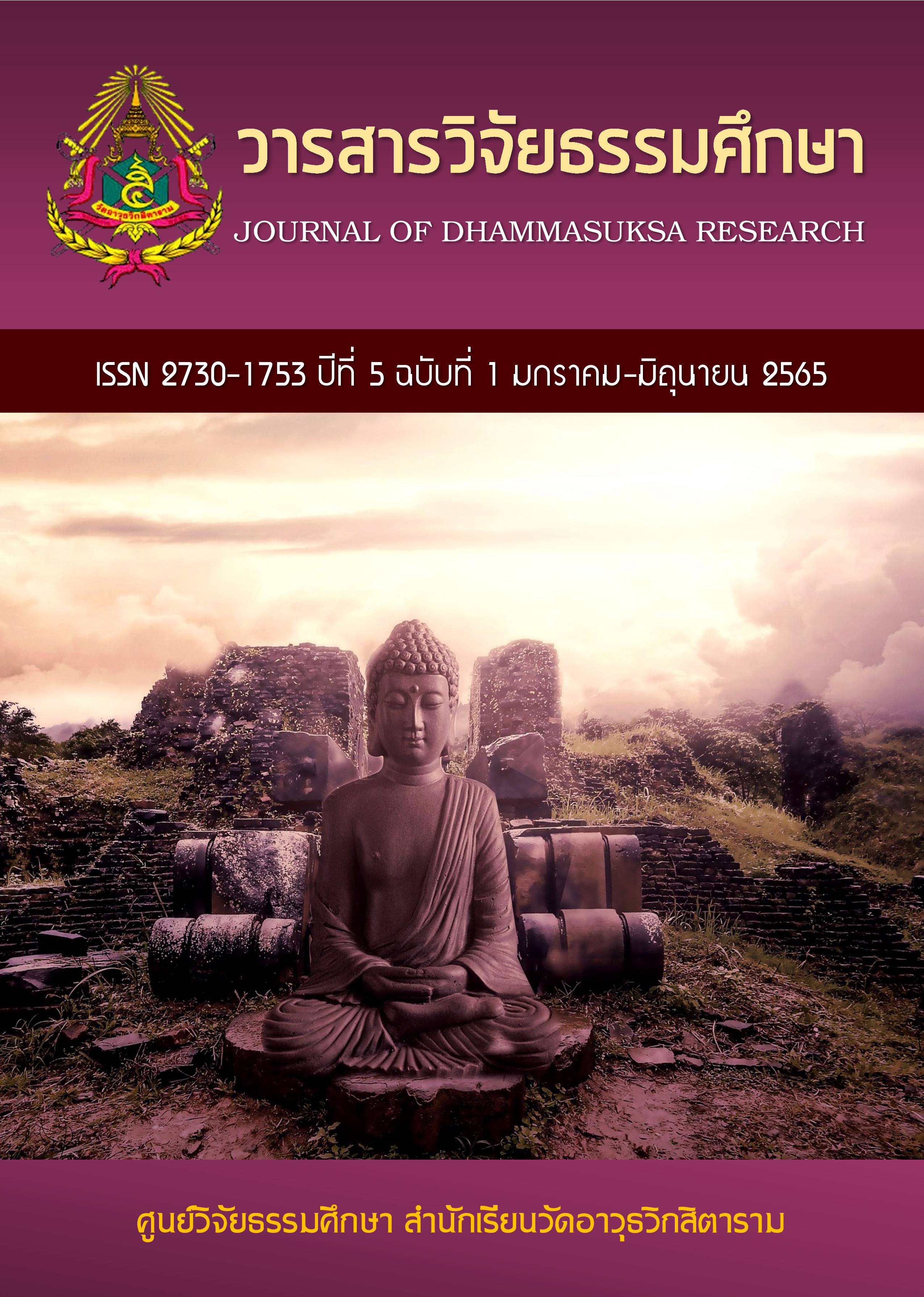รูปแบบการเสริมสร้างประสิทธิผลการดูแลสุขภาพแบบองค์รวม ของพระสงฆ์ในพื้นที่จังหวัดภาคกลางตอนบน
คำสำคัญ:
การดูแลสุขภาพของพระสงฆ์, การบริหารจัดการ, ธรรมนูญสุขภาพพระสงฆ์แห่งชาติบทคัดย่อ
การวิจัยเรื่องรูปแบบการเสริมสร้างประสิทธิผลการดูแลสุขภาพแบบองค์รวมของพระสงฆ์ในพื้นที่จังหวัดภาคกลางตอนบน มีวัตถุประสงค์เพื่อ 1) ศึกษาบริบทและปัญหาในการดูแลสุขภาพแบบองค์รวมของพระสงฆ์ในพื้นที่จังหวัดภาคกลางตอนบนเป็นอย่างไร 2) ศึกษารูปแบบการเสริมสร้างประสิทธิผลการดูแลสุขภาพแบบองค์รวมของพระสงฆ์ในพื้นที่จังหวัดภาคกลางตอนบนควรเป็นอย่างไร 3) นำเสนอแนวทางการพัฒนาเสริมสร้างประสิทธิผลการดูแลสุขภาพแบบองค์รวมของพระสงฆ์ในพื้นที่จังหวัดภาคกลางตอนบน ขอบเขตผู้ให้ข้อมูลสำคัญที่ใช้ศึกษาครั้งนี้ คือ กลุ่มผู้รู้ ได้แก่ ประธานคณะกรรมการขับเคลื่อนธรรมนูญสุขภาพพระสงฆ์แห่งชาติ พ.ศ. 2560 ฝ่ายบรรพชิต ฝ่ายคฤหัสถ์ สำนักงานสาธารณสุข สำนักงานคณะกรรมการอาหารและยา สำนักงานพระพุทธศาสนาแห่งชาติ รวม 5 ท่าน กลุ่มผู้ปฏิบัติ ได้แก่ พระสงฆ์ที่อยู่ในพื้นที่จังหวัดภาคกลางตอนบน จำนวน 35 รูป กลุ่มผู้มีส่วนร่วม ได้แก่ โรงพยาบาล สำนักงานพระพุทธศาสนาจังหวัด สำนักวัฒนธรรมจังหวัด โรงพยาบาลส่งเสริมสุขภาพตำบล โรงเรียน เทศบาล องค์การบริหารส่วนตำบล อุบาสก อุบาสิกา และอื่นๆ ที่มีส่วนเกี่ยวข้อง จำนวน 5 ท่าน เก็บรวบรวมข้อมูลด้วยการสัมภาษณ์เชิงลึก และการสนทนากลุ่ม ซึ่งเป็นการวิจัยเชิงคุณภาพที่ใช้การวิเคราะห์สาระ
ผลการวิจัยพบว่า การบริหารจัดการต้องแบ่งออกเป็นสองส่วนคือ บริหารการสร้างพระคิลานุปัฏฐากและบริหารวัด โดยการบริหารวัดคือการบริหารตน บริหารคนและบริหารวัด โดยการบริหารตนใช้การบริหารโดยใช้วัตร 10 ประการ การบริหารคนแบ่งคนออกเป็น 2 กลุ่ม คือ บริหารคนในวัดใช้หลักทศพิธราชธรรม บริหารคนนอกวัดใช้หลักการบริหารอุบาสกอุบาสิกา 5 ประการ การบริหารวัดให้ใช้หลักการบริหารกิจการคณะสงฆ์ ตามที่มหาเถรสมาคมกำหนดไว้ 6 ด้าน
ข้อเสนอแนะ 1) แก้ไขระเบียบบางประการที่ก่อให้เกิดปัญหาติดขัดในการปฏิบัติงานก็ให้ทำการแก้ไขให้สามารถดำเนินการต่อไปได้อย่างคล่องตัวและรวดเร็ว 2) ควรให้มีการตั้งหน่วยงานการบริหารจัดการปัญหาสุขภาพพระสงฆ์โดยเฉพาะเพื่อให้การบริหารจัดการเป็นไปอย่างมีประสิทธิภาพและต่อเนื่อง
เอกสารอ้างอิง
ธรณ์ ธารงนาวาสวัสดิ์. (2548). ใต้ทะเลมีความรัก ภาคสาม: หลังคลื่นอันดามัน. กรุงเทพฯ: บ้านพระอาทิตย์.
กุลธิดา ท้วมสุข. (2538). แหล่งสารนิเทศบนอินเทอร์เน็ต. มนุษยศาสตร์และสังคมศาสตร์, 13(2), 1-13.
ส้มโอมือ. (มีนาคม 2545). อาหารบารุงสมอง. Update, 20(210), 37-40.
ไตรรัตน์ สุนทรประภัสสร. (2540, 8 พฤศจิกายน). อนาคตจีน-อเมริกา. เดลินิวส์, น. 6.
ช่อเพ็ญ นวลขาว. (2548). ความสัมพันธ์ระหว่างการเปลี่ยนแปลงระบบนิเวศกับแบบ แผนการผลิตและวัฒนธรรมการบริโภคอาหาร ศึกษากรณีชุมชนขนาบนาก จังหวัดนครศรีธรรมราช. วิทยานิพนธ์ปริญญามหาบัณฑิต, มหาวิทยาลัยวลัยลักษณ์.
Roger L. C. & Richard, L. H. (2010). Calcium-Permeable AMPA receptor dynamics mediate fear, memory erasure. Science, 330(6007), 1108-1112. doi:10.1126/science.1195298
ชาญณรงค์ ราชบัวน้อย. (2562, มกราคม 3). ศัพท์บัญญัติการศึกษา. [เว็บบล็อก]. สืบค้นจาก http://www. sornor.org/.

ดาวน์โหลด
เผยแพร่แล้ว
รูปแบบการอ้างอิง
ฉบับ
ประเภทบทความ
สัญญาอนุญาต

อนุญาตภายใต้เงื่อนไข Creative Commons Attribution-NonCommercial-NoDerivatives 4.0 International License.


